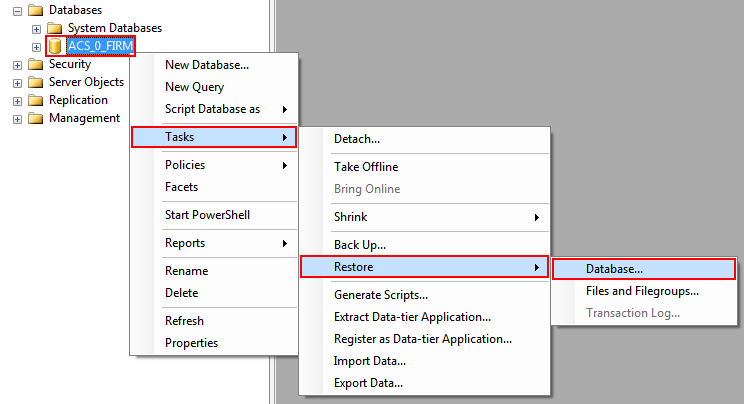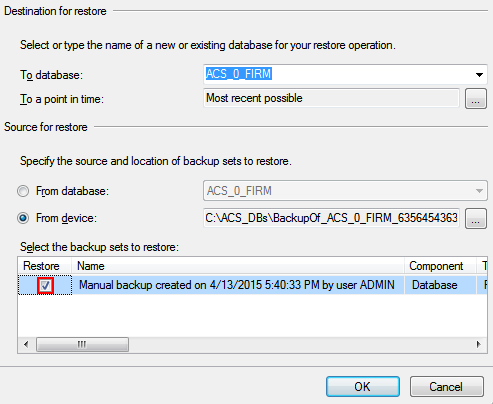In your CS Professional Suite application — Practice CS, FileCabinet CS, Accounting CS, or Workpapers CS — data for all of your firm's clients is stored in a single SQL database. Therefore, when you use Microsoft SQL Server Management Studio Express to restore client data, the application restores data for all clients in the database. The likelihood of data for a single client becoming corrupt is very low; therefore, backing up and restoring data for clients individually would be an ineffective defense against data corruption, hardware failure, or a similar scenario.
In most cases you would not need to use the following restore procedures. However, if the situation arises, you can follow these steps to install the Microsoft SQL Server Management Studio Express application and restore your firm's data from there.
If you're using one of these applications in the Virtual Office or Software as a Service (SaaS) environment, contact Support to request a database restore.
Notes
- FileCabinet CS only: We recommend that you make a SQL backup from within FileCabinet CS rather than using SQL Server Management Studio. Although it's possible to backup and restore this data, it can result in authentication issues.
- Accounting CS and Workpapers CS: You can use Microsoft SQL Server Management Studio to restore the entire firm database, but not data for a single client. For help with backing up and restoring individual clients, see Backing up and restoring data for a client via the Client Data Management Utility.
Installing SQL Server Management Studio
Use the following procedure to install the latest version of the Microsoft SQL Server Management Studio application on your server.
- Visit Microsoft's website and click the Download SQL Server Management Studio <version> link.
- After the download is complete, navigate to and double-click the SSMS-Setup-ENU.exe file to begin the installation.
Notes
- If you are working in a Windows 10 environment, we recommend that you install SQL Server 2014 or later. For details, visit https://support.microsoft.com/en-us/kb/2681562.
- If you need assistance with installing Microsoft SQL Management Studio, contact a qualified IT professional. Our Technical Support team is unable to assist with this installation.
Restoring a database
If you choose to restore a firm database over an existing one, you will overwrite data for all clients included within that database.
- Ensure that all users have closed CS Professional Suite applications.
- Launch SQL Server Management Studio by choosing Start > All Programs > Microsoft SQL Server > SQL Server Management Studio.
- In the Server name field of the Connect to Server dialog, select the SQL server (for example, [SERVER_NAME]\CREATIVESOLUTION) where the databases reside, and click the Connect button.
- Expand the Databases folder in the Object Explorer pane.
Note: If you are not restoring over a database, right-click the Databases folder and choose Restore Database.
- Right-click the CS Professional Suite database (for example, ACS_XXX_FIRM or CSP_XXX_[firm database name]), and then choose Tasks > Restore > Database from the context menu. Show me.
- In the Restore Database dialog, verify the CS Professional Suite database (for example, ACS_XXX_FIRM or CSP_XXX_[firm database name]) is selected in the To database field.
- Click the From device option in the Source for Restore section and click the
 button next to that field.
button next to that field. - In the Specify Backup dialog, click the Add button, browse to the location of the database that you want to restore, select the backup file, and click OK.
Note: If your database backup file is not listed in the folder, select All Files(*) from the Files of type field. Valid database file extensions include .bdf or .bak.
If still unable to locate the database backup, attempt to move it to a local drive and attempt to browse for it again.
- Mark the checkbox in the Restore column next to the database file to be restored. Show me.
- Select the Options page and mark the Overwrite the existing database (WITH REPLACE) checkbox. Show me.
- Click OK to restore the database.
- When the database file has been restored successfully, click OK.
Was this article helpful?
Thank you for the feedback!





